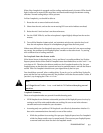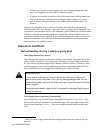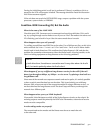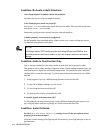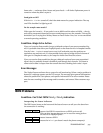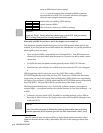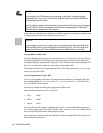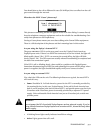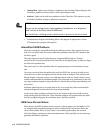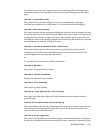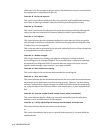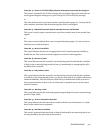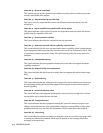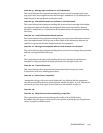
TROUBLESHOOTING 9-17
You should also try the call at different bit rates (56/64 Kbps): that can affect how the call
gets routed through the network.
What does the ISDN “Cause” phrase say?
This phrase or something similar will appear on the LCD after dialing. It comes directly
from the telephone company equipment and can be valuable for troubleshooting. Gen-
erally these phrases are self-explanatory.
Getting a Cause phrase means you are at least talking to the Central Office equipment.
There is a full description of the phrases and their meanings later in this section.
Are you using the Zephyr’s internal NT1?
The green LINE DIRECT LED is on the rear panel, near the U jack of North American
ZephyrExpress units. If there’s no ISDN line connected, or the line is dead, the light will
blink rapidly (about 5 Hz). If NT1 can contact the central office, the light will blink
slowly (about 1 Hz). The LED comes on steadily when all handshaking is completed and
the basic line connection is good.
If the LED is off, or blinking slowly, there could be a problem with ZephyrExpress.
Sometimes disconnecting the ISDN line and rebooting the system will fix things: when
power is reapplied, the light should blink rapidly until you re-connect the line..
Are you using an external NT1?
If so, check the LEDs on the unit. The following indicators are typical, but not all NT1s
will work this way.
• Power. Should be lit. In North America, power for the NT1 is normally provided by
the terminal device; in this case, ZephyrExpress. Units sold in North America have
both S and U interface jacks (and an internal NT1), and provide power over the 8-pin
S interface cable. Elsewhere, power is normally provided by a separate NT1 power
supply. Units sold outside North America have just an S interface jack, and do not
provide power.
w
WARNING!
Do not power the NT1 from both ZephyrExpress and an external supply. If you’re
using a North American ZephyrExpress and an external NT1, disconnect any other
power supply.
• A blinking Power light usually indicates insufficient voltage.
• Active. Lights green when all is well.



